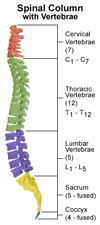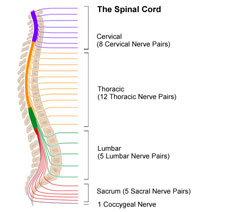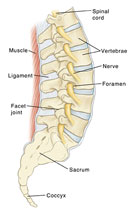Spine Care



The spinal column is a stack of vertebral bones separated by flexible shock-absorbing discs. The spinal cord, a cable-like bundle of nerves, originates in the brain and runs down the center of the spinal column. The peripheral nerves branch out from the spinal cord through nerve root canals in the vertebra, and create thread-like communication pathways to the body.
When the spinal column is injured or damaged by disease, the spinal cord and/or nerve roots can be pinched or compressed. This disrupts the communication pathways between the brain and the body.
Symptoms can include pain, numbness, tingling, weakness, and/or loss of fine motor skills. If the injured or diseased area is in the cervical spine, it can cause pain and other symptoms in the neck, shoulders, arms and hands. If it is in the thoracic spine, there can be symptoms in the chest, upper abdomen, and legs. If it is in the lumbar spine, symptoms will be felt in the lower back, buttocks, or legs.
Severe conditions can cause myelopathy, a loss of coordination and a heavy feeling in the affected limbs, or paralysis.
- Learn more about common disorders of spine
- Diagnostic tests
- Treatments and procedures